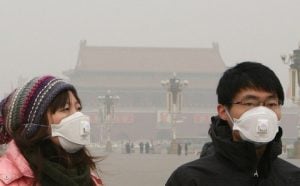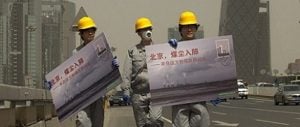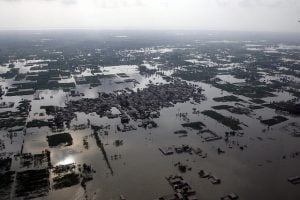China finds itself in the grip of a serious air pollution crisis. A new report from Greenpeace in December suggested more than 8,000 people were killed by the pollutant PM2.5, fine particulate matter linked to asthma and lung cancer, in four Chinese cities this year.
As the country continues its rapid pace of urbanisation and industrialisation, with a large reliance on coal, sources of air pollution are also rising.
During the 11th Five-Year Plan period (2006-2010), emission of nitrogen oxides increased by about 40%. That means that even if nitrogen oxides emissions fall by 10% by the end of the 12th Five-Year Plan (2011-2015), levels in 2015 will still be higher than in 2005.
The Chinese government is striving to respond. Following last year’s public furore over urban air quality, it revised its pollution standards, introducing new indices for PM2.5 and ozone, among other changes. But getting vast and rapidly urbanising China to meet higher standards is no easy task.
In the early days of industrialisation and urbanisation, the US and Europe experienced severe air pollution. The great smog of London, which may have killed as many as 12,000 people in a single week in 1952, was symptomatic of a dirtier era.
Though both regions still have major problems with air quality (last year, 121 counties in 18 US states failed to meet national air quality standards, according to the Environmental Protection Agency (EPA)) progress has been made since the bad old days. A closer comparison of the US and China can flag up some useful lessons for China.
Perhaps the most obvious difference is in the resources available for tackling air pollution issues.
The EPA employs 18,760 people, among whom 1,400 are responsible for air-quality management, with corresponding employees for each state, county and city. In California alone, there are 1,273 people in the air-quality management office and 35 air-quality control districts, each with its own management personnel.
In comparison, China’s Ministry of Environmental Protection has several hundred employees in total, among whom only a small number are responsible for air-pollution management. If environmental management staff were employed in proportion to the population or number of pollution sources, this figure would be on a completely different scale.
It’s worth noting that the US government rarely provides financial support to help companies cut pollution, believing this to be the companies’ own responsibility. The state’s main function is to provide the corporate world with a fair market and sound legal environment.
US businesses caught discharging pollutants illegally can be fined up to US$250,000 per day, while economic gains obtained through this illegal activity may be confiscated. If the action has caused environmental damage, civil litigation and public interest litigation will likely be carried out to determine compensation.
The cost of breaking the law in China is considerably lower.
US system encourages innovation
What’s more, China’s standards are static. Once an emissions standard for a particular pollutant has been formulated, the Chinese government sets an emission limit and a timescale for when it must be met by. At a local level, plans to meet these targets are not approved by officials from central government, meaning no one higher up the chain is judging the value of these projects or supervising their outcomes.
In comparison, the US system is much more dynamic. New projects are approved by the EPA and expected to adopt the best available technology. Companies with advanced environmental technologies are invited to put these forward, and if they are recognised by the local environmental protection department as being the best and most applicable technology, subsequent projects must adopt them.
This system encourages dynamic innovation within environmental protection companies because it is in their commercial interests to get their products out on the market.
Recently the Chinese public has significantly – and noisily – upped its demands for better air quality. And the government has tried to respond. But to get 80% of China’s cities to mandated standards by 2025, average concentrations of coarse particulate matter PM10 and the finer and more dangerous particulates PM2.5, would need to fall by 10-15% within each five-year plan.
This target range is far greater than the 11th and 12th five-year plans’ goals for controlling the total amounts of major pollutants. The difficulties involved in reaching this target are obvious. But in view of the negative impact air pollution is having on public health, China must come up with a solution, and fast.
China’s advantages
It has some advantages in this process. First, it can benefit from accumulated scientific and technological knowledge, which the US didn’t have access to when it was starting out on this road. During the early stages of air-pollution management, America didn’t have a clear understanding of the impacts of different pollutants. For a long time, VOCs (volatile organic compounds) were thought to be the cause of ground-level ozone (photochemical smog). It was only later that the role of nitrogen oxides was recognised.
Modern China also has access to mature technology, which can be used to tackle different pollution emission sources, for example the desulphurisation of coal-fired power plants, de-nitrification and dust removal. Advanced technology to control car emissions, combined with clean fuel, can now remove most pollutants from vehicle exhaust.
And experience shows that China is able to use its cost advantage to apply new technologies on a massive scale more cheaply than has been managed elsewhere.



